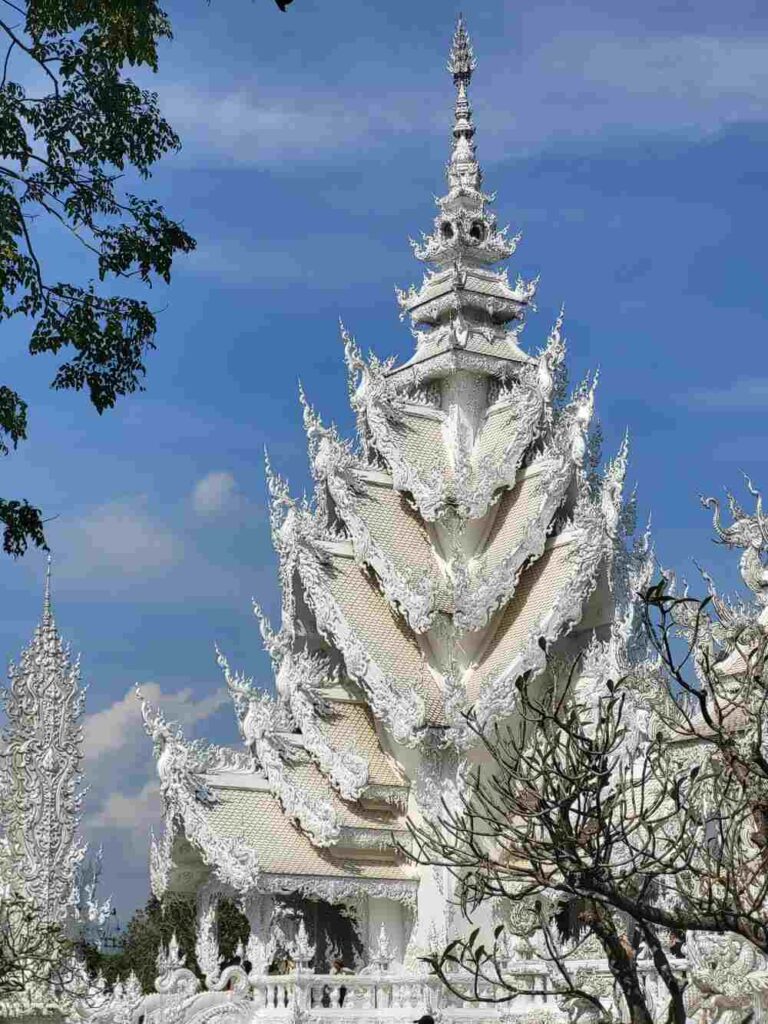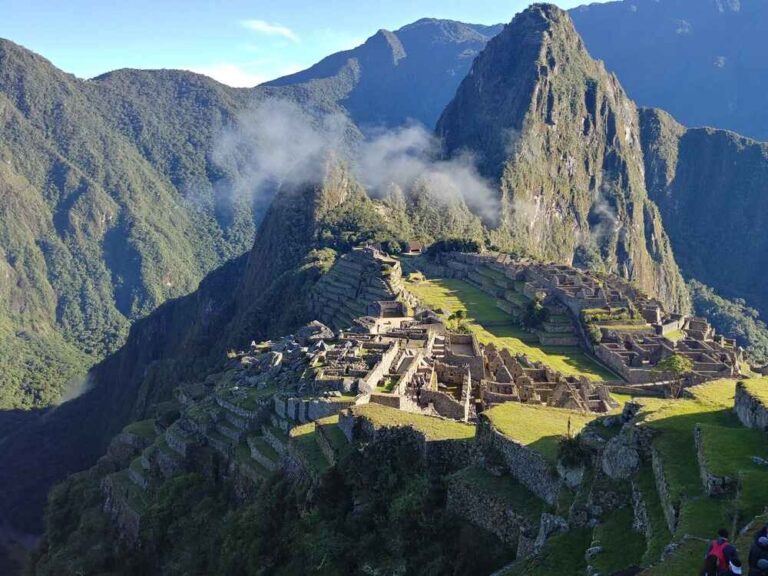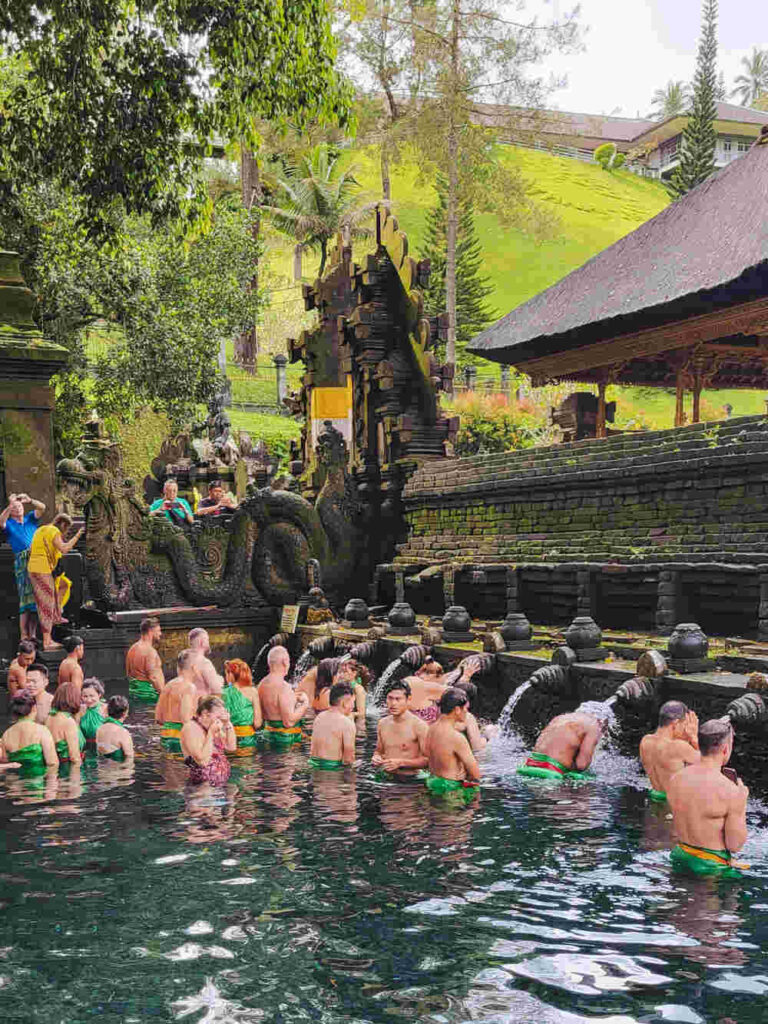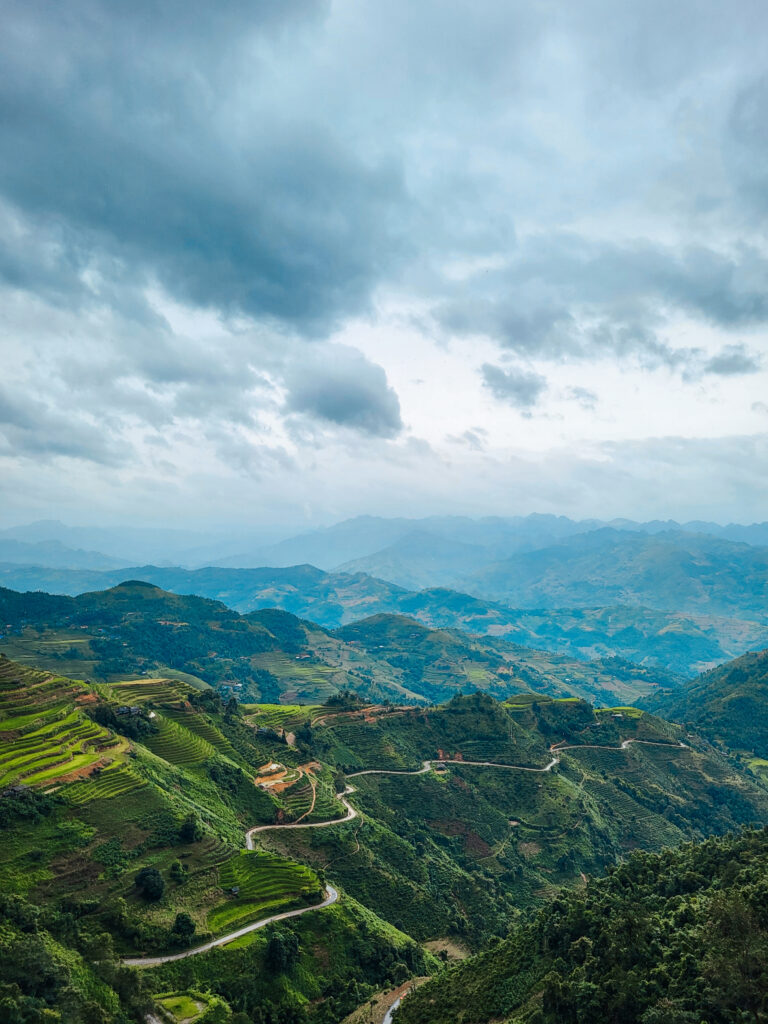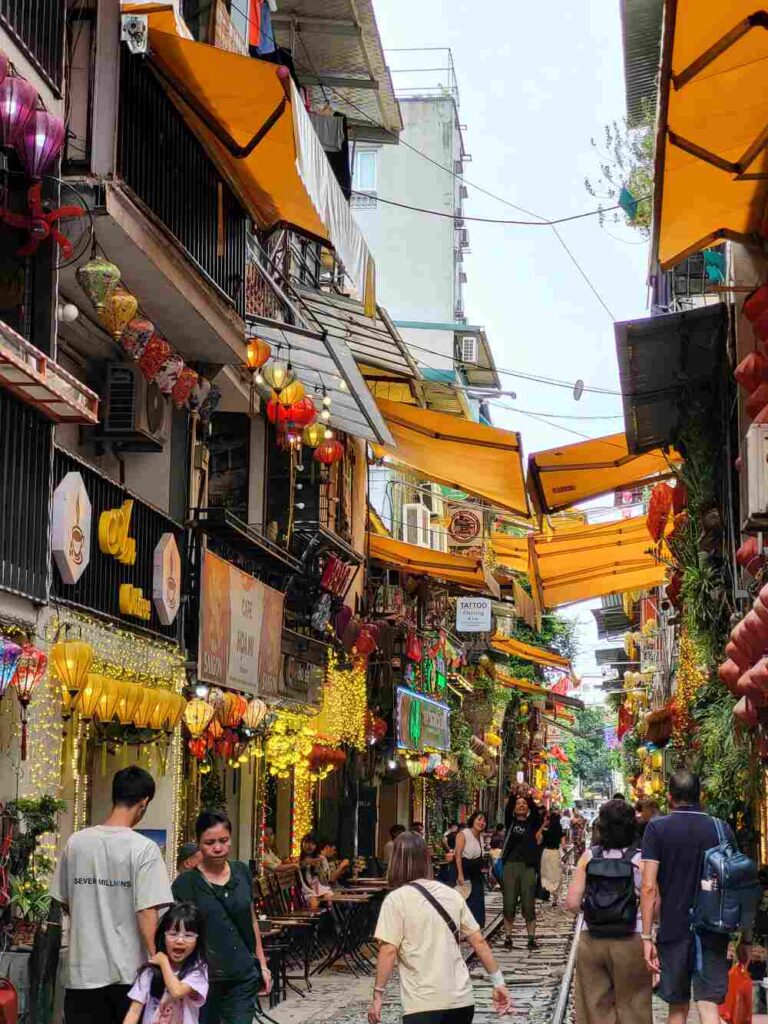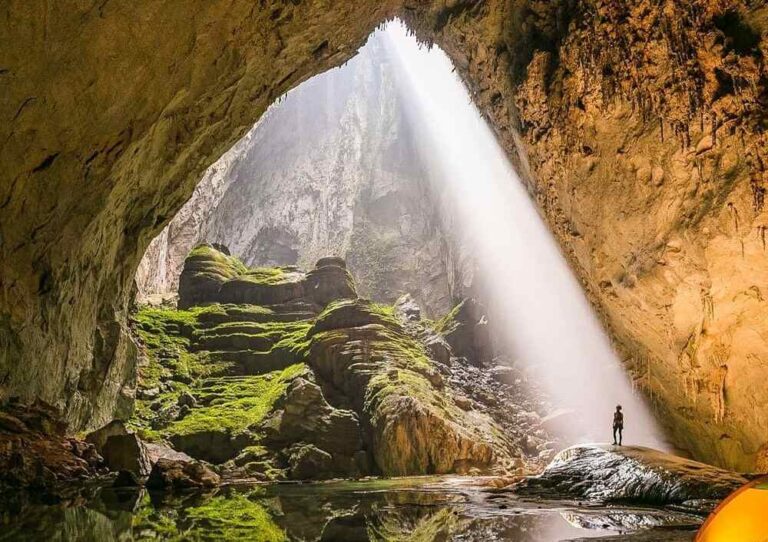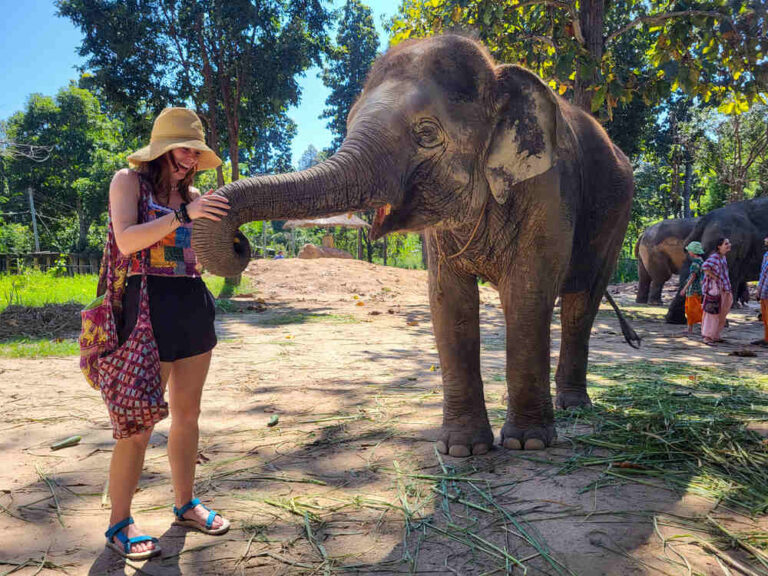Chiang Rai attractions include some of the most unique temples in Thailand.

Northern Thailand is known for its abundant nature, fostering amazing mountains, trees, and a relaxing lifestyle. It is also known for its abundance of beautiful art, meditation, and some fascinating temples. Although you can find holy temples all over the country, Chiang Rai is home to two fascinating, new and stunningly unique temples in particular.
I’m talking about Visiting Wat Rong Khun and Wat Rong Suea Ten. AKA the White Temple and the Blue Temple in Chiang Rai. But what is the story behind these unique temples? Why are they so different from other Thailand cultural sites? This is what I have learned about these fascinating attractions. A quick Chiang Rai temple tour, if you will.
Chiang Rai’s White and Blue Wonders
Nestled in the northern Thai city of Chiang Rai are two of Thailand’s most breathtaking and imaginative temples: the White Temple (Wat Rong Khun) and the Blue Temple (Wat Rong Suea Ten).
These modern masterpieces don’t just invite you to marvel at their beauty—they invite you to reflect (literally), dream (about pop culture), and maybe take a photo or twenty. The artistic liberties taken in the creation of these temples are apparent and even unexpected in a Thai temple. This post goes into the history of the artistic temples and explores the unique stories behind them.
The White Temple in Chiang Rai
The White Temple is the creation of Thai artist Chalermchai Kositpipat, whose dream was to craft a place that celebrated Buddhist teachings in a way that spoke to modern audiences. The temple was built in 1997, making it quite new to the temple game.
The temple was built entirely in white, meant to symbolize purity. Every inch of this beautiful structure is outlined with tiny mirrors to catch the sunlight. This temple literally sparkles as you move through it!
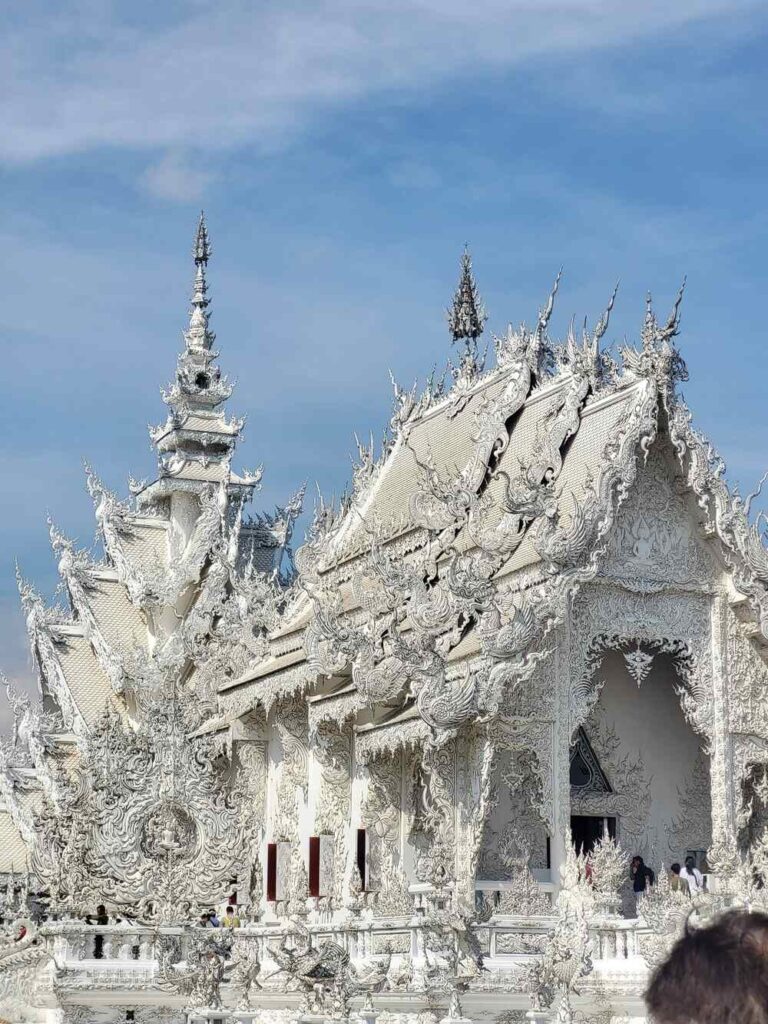
You begin your walk through the temple by crossing a bridge over a sea of sculpted hands reaching toward you. This is supposed to be a visual metaphor for overcoming desire and reaching enlightenment. It’s quite eerie, but the whole thing is representing the cycle of rebirth. The intricate details feel surreal, but they’re all designed with intention to spark interest in visitors. I think it does an amazing job at that.
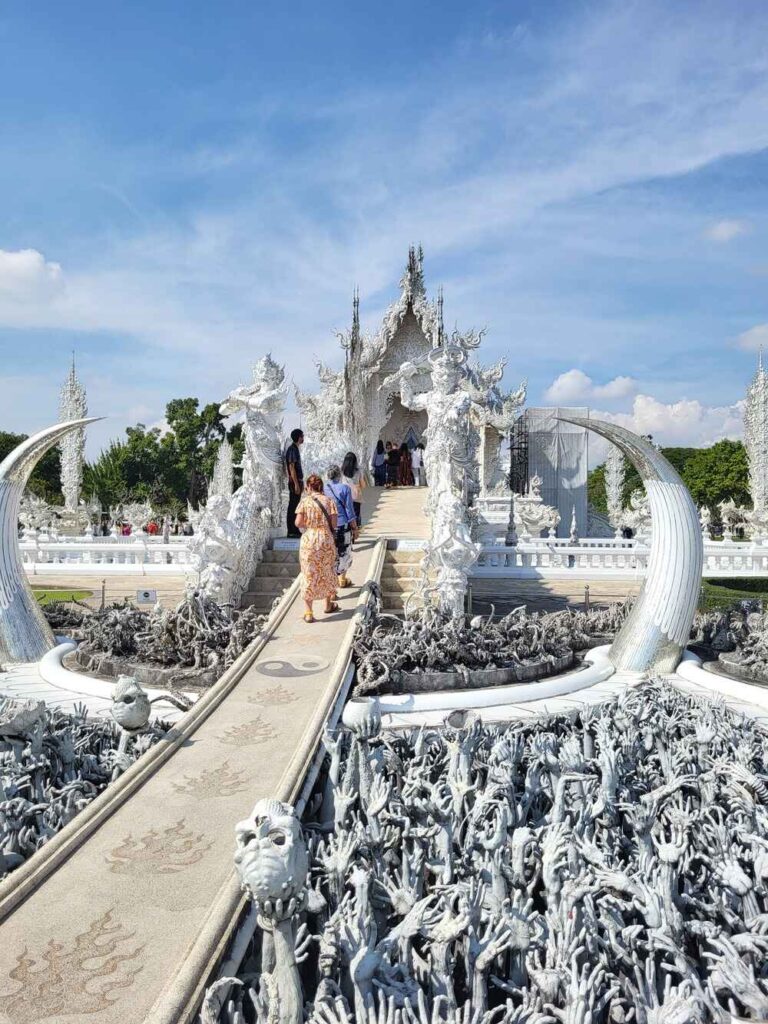
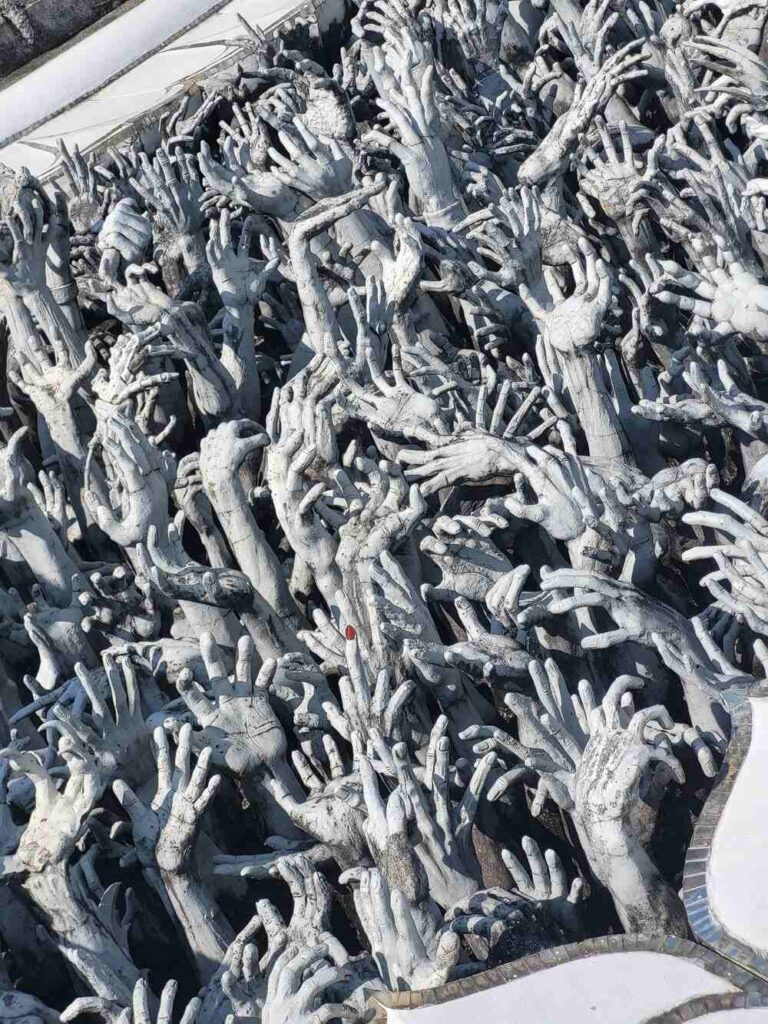
Inside, more surprises come to hit you as it incorporates the last thing you expect to see in a Thai temple. Murals on the walls blend traditional Buddhist symbols with modern pop culture elements, including characters from superhero movies and cartoons! Forget serene Buddhas and lotus flowers; instead, you’ll spot murals of Superman, Hello Kitty, and even Keanu Reeves as Neo.
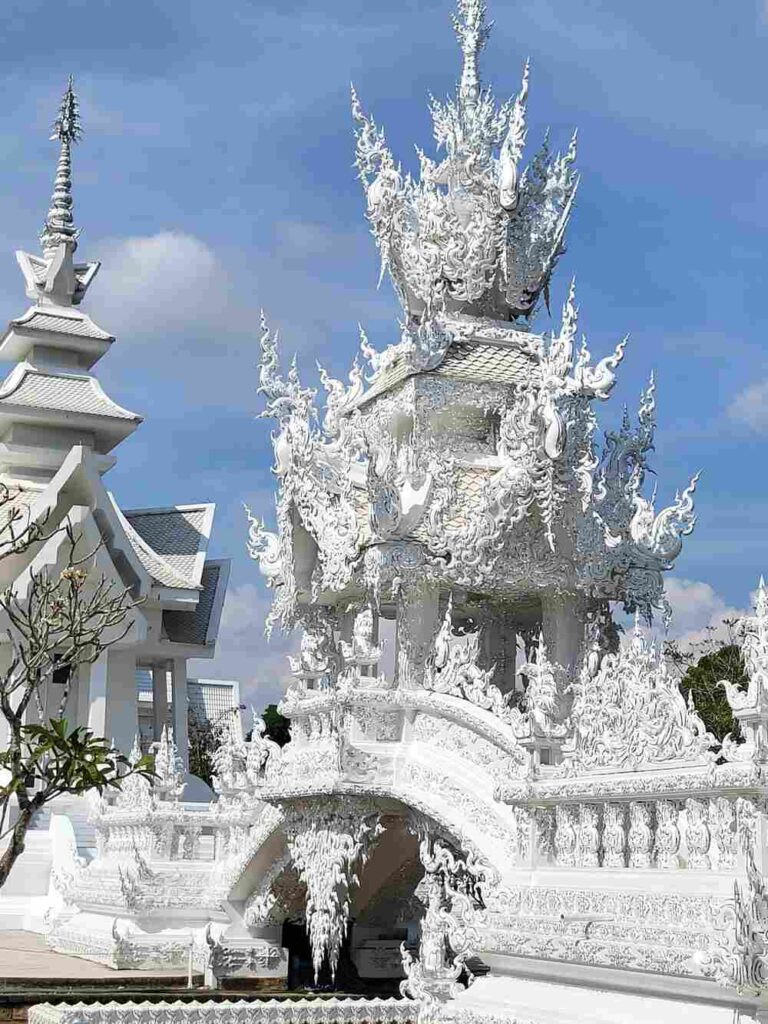
Chalermchai’s vision was to mix pop culture and Buddhist philosophy. It is quite an odd sight to see inside a temple, especially one with such a sophisticated first impression.
The murals are a reminder that wisdom can be found everywhere—even in unexpected places. Chalermchai’s vision is a blend of reverence, creativity, and an abundance of metaphors, offering a new perspective on how art and spirituality intersect.
The White Temple in Chiang Rai is beautiful, but it also makes you realize how Western culture has really forced its influence all over the world.
The Blue Temple in Chiang Rai
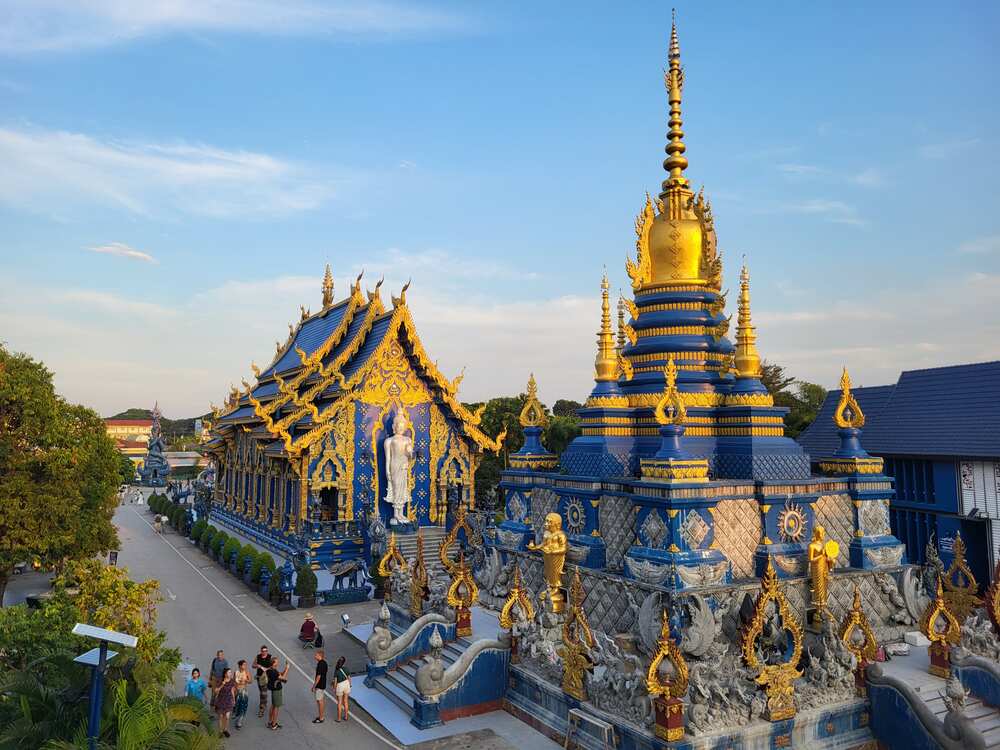
A short drive from Wat Rong Khun is the Blue Temple (Wat Rong Suea Ten), designed by Putha Kapkaew in 2016. Putha was a student of Chalermchai, and he also incorporated many teachings and metaphors in his work.
As you may guess, this temple is known for its blue, which symbolizes wisdom and the infinite nature of the sky. Stepping inside feels like entering a peaceful, otherworldly space where golden highlights and intricate patterns glow against the deep blue walls.
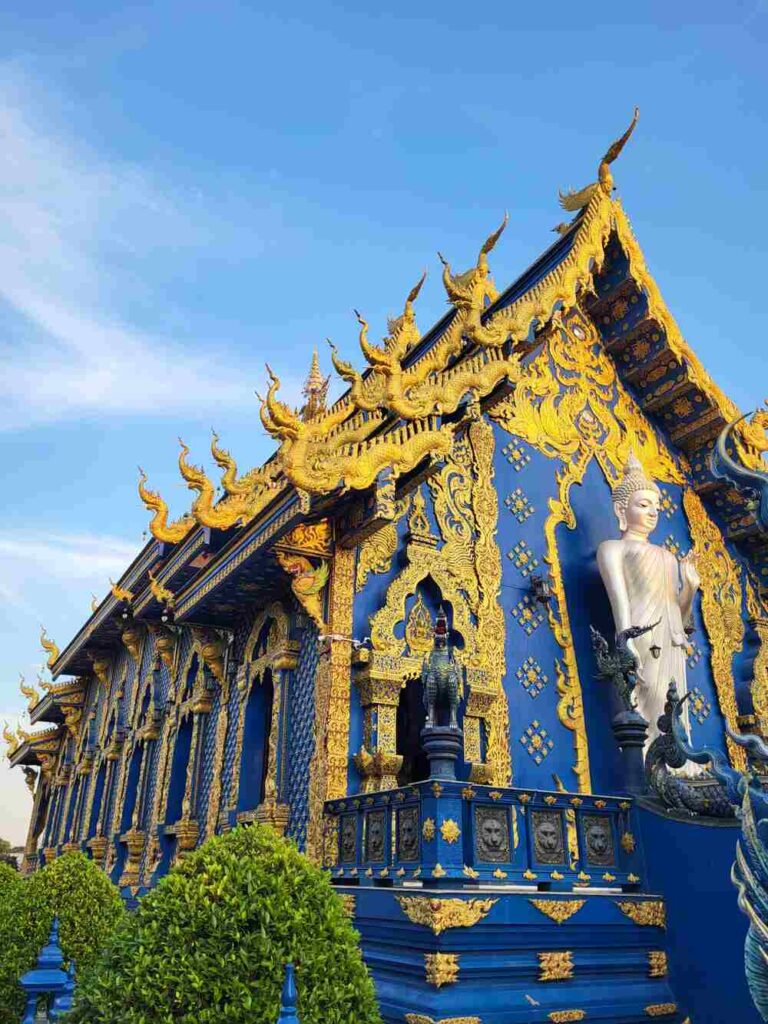
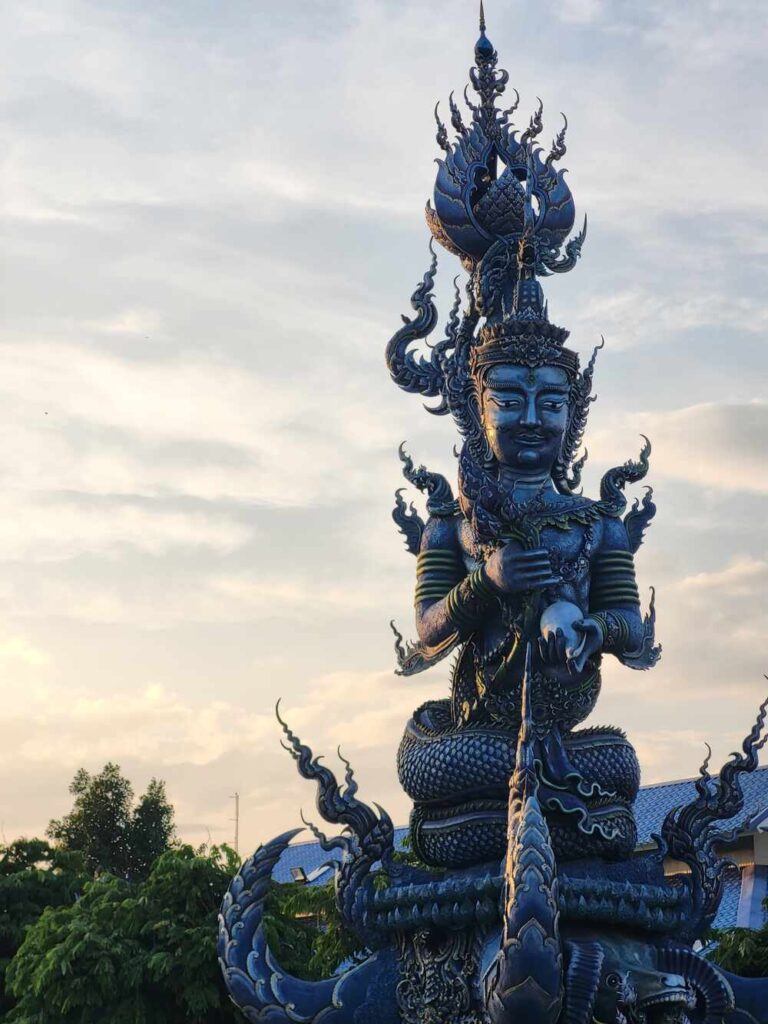
At the heart of the temple is a gleaming white Buddha statue, whose peaceful expression invites visitors to reflect and find inner calm. The Blue Temple may not have the same theatrics as the White Temple, but its atmosphere of quiet majesty is still impressive.
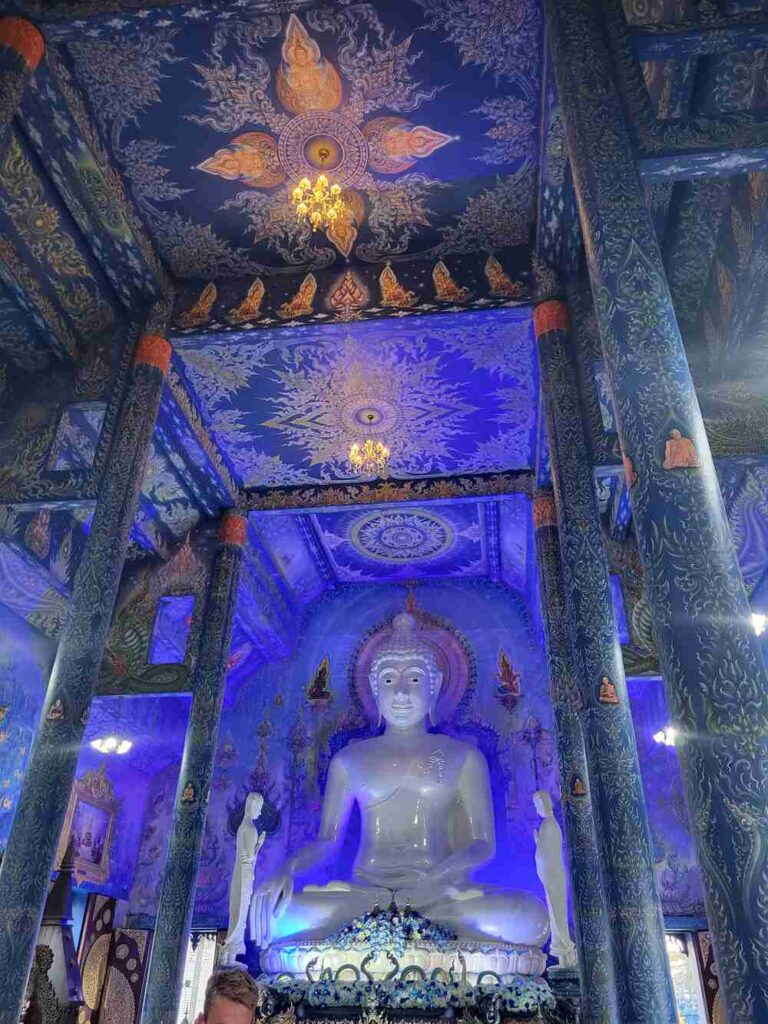
The temple’s name, Wat Rong Suea Ten, translates to “House of the Dancing Tiger,” a nod to the area’s folklore. It’s said that tigers once roamed the region, and the temple honors this history with a spirit of grace and strength.
A Pair of Artistic Marvels
The White and Blue Temples are like two sides of the same coin—different in style but united in purpose. Both temples aim to inspire reflection and wonder through their unique designs. They’re relatively new additions to Thailand’s rich culture, and their modern touches set them apart from the country’s ancient temples.
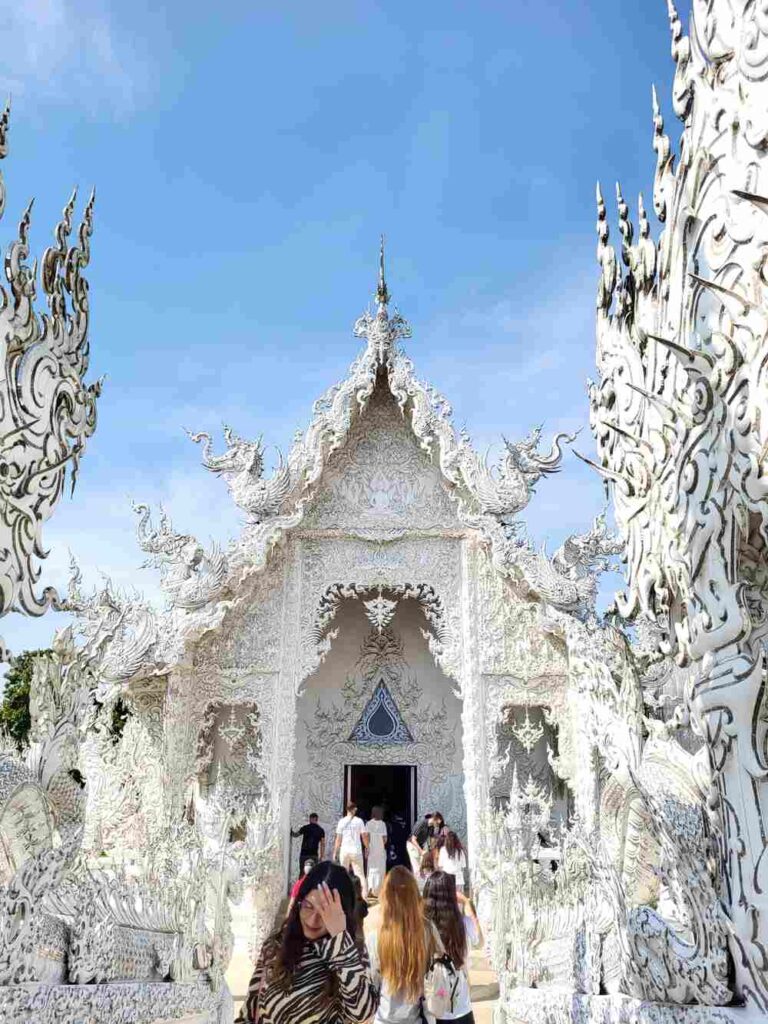
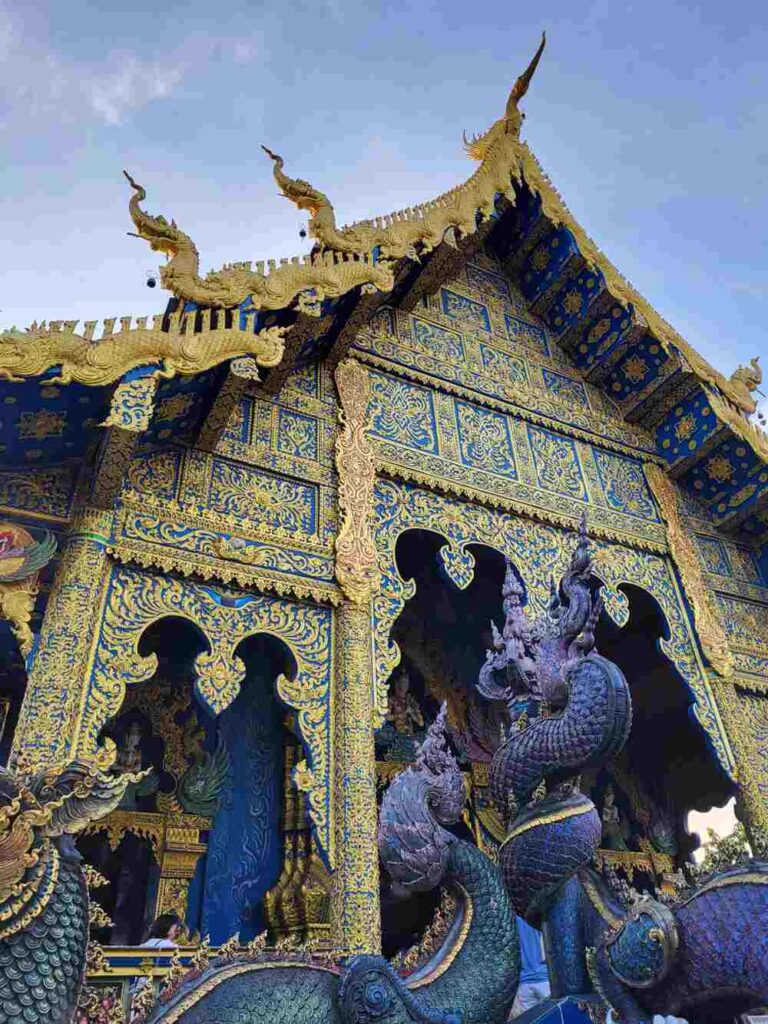
These temples showcase the creativity and artistry of Chiang Rai’s visionaries. They invite visitors to explore not just the beauty of Buddhism but also the possibilities of blending tradition with innovation.
Whether you prefer the White Temple’s gaudy brilliance or the Blue Temple’s calming vibes, one thing’s for sure: these two architectural oddballs have redefined what it means to be a temple. The structures are proof that spirituality can be colorful, weird, and occasionally involve Iron Man.
Planning Your Visit to Chiang Rai
A visit to Chiang Rai is an unforgettable experience and, in my opinion, worth it just to see these two temples. Both welcome visitors of all backgrounds and offer an opportunity to connect with Thai culture and spirituality in a truly unique setting. They may be more of tourist spots, but they are unique structures only found in Chiang Rai.

